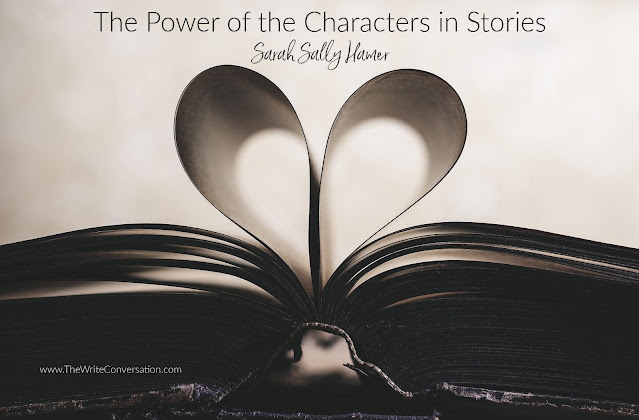by Sarah Sally Hamer @SarahSallyHamer
Characters are powerful. They carry a story with their passion, their love, their hate. Each one has their own understanding of themselves—which we, as writers, have to capture on the page.
Where does that power come from? From the raw and unique experiences and emotions inside of the writer. That doesn’t mean that, for our character to be a serial killer, we have to murder someone. Or that, if our character is watching a close family member die, we can only write it if we’ve been in the exact same situation. But we’ve all experienced rage and grief at some point in our lives. Those are the emotions writers expand on in a story—and how our audience connects with them.
So, how do we get character power onto the page?
1. Use the magic “what if?”
Pretending you are the character allows you to access information that may amaze you. Just keep asking yourself (and that character) “what if?” Imagine what Frank Baum could have asked Dorothy. What if you needed courage? (Create the Cowardly Lion) What if you needed compassion? (Create the Tin Man) What if you needed logic and intelligence? (Create the Scarecrow) And, last but not least, what if you needed an obstacle to overcome? (Create the Wicked Witch of the West) We all know the story, so the “what ifs” sound a little silly now, but you can ask the same questions of your protagonist, filling in the supporting characters—and emotions—as needed.
2. Use objects to connect the character to the reader
What is in the scene for the character to react to? A clock her dying mother wound each day? An old cigar box that still smells of his grandfather’s smoking habit? A ring her lover gave her? How could those objects (or millions of others) help your character present an emotion to the reader? Each one can be connected directly to that emotion, adding a dimension to description which brings the character to life. Short story: I helped with the set design on a play in college—we produced “Hello Dolly” in the round. Every item on stage meant something. From the chair Dolly sat in to the brooch on the dress she wore, to the objects in Horace’s store, everything gave meaning to the character who owned or wore or held it. And, each one evoked an emotion in the character, which translated to the audience. There are reasons why certain objects or music or vistas are used in movies and plays. We writers can use those same techniques in our books, simply by considering what emotions a simple item can expose.
3. Justify your character’s actions
It’s not just WHAT they do, it’s WHY they do it. We all have a reason for why we got up out of a chair. It could be a physical reason (I need a drink of water) or an emotional reason (I must defend myself from that angry person standing over me). Regardless, each WHY also has to move the story forward. It doesn’t mean that your character won’t occasionally do something for a physical reason. But if you can find an emotional reason behind each action—if you can justify what your character does—they come to life.
These are only a very few techniques available, but can get you started. How does your character act? And why?
TWEETABLE
Sarah (Sally) Hamer, BS, MLA, is a lover of books, a teacher of writers, and a believer in a good story. Most of all, she is eternally fascinated by people and how they 'tick'. She’s passionate about helping people tell their own stories, whether through fiction or through memoir. Writing in many genres - mystery, science fiction, fantasy, romance, medieval history, non-fiction – she has won awards at both local and national levels, including two Golden Heart finals.
A teacher of memoir, beginning and advanced creative fiction writing, and screenwriting at Louisiana State University in Shreveport for almost twenty years, she also teaches online for Margie Lawson at WWW.MARGIELAWSON.COM. Sally is a free-lance editor and book coach at Touch Not the Cat Books, with many of her students and clients becoming successful, award-winning authors.
You can find her at hamerse@bellsouth.net or WWW.SALLYHAMER.BLOGSPOT.COM


Great words this morning, Sally! I learn so much from you. You're a wonderful teacher. Keep up the good work writing and teaching!
ReplyDeleteThank you, Diane!
DeleteThese points do help to go deeper into the characters personality.Thanks for sharing your wisdom, Sally.
ReplyDeleteAnd, that's what we're there for, right? Thanks, Barbara.
Delete